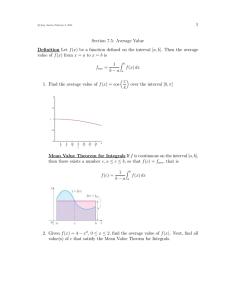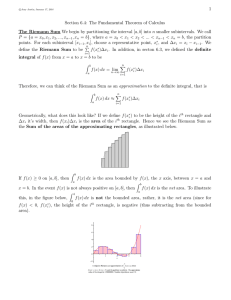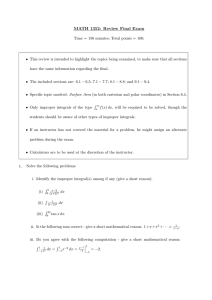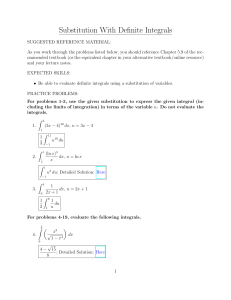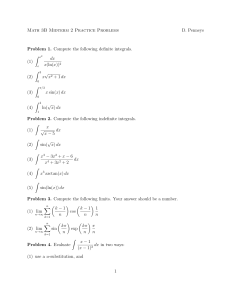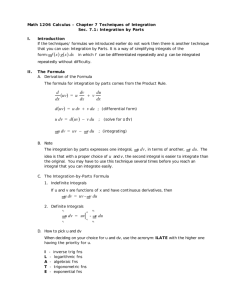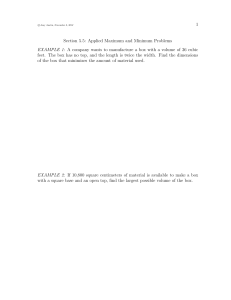Document 10482329
advertisement
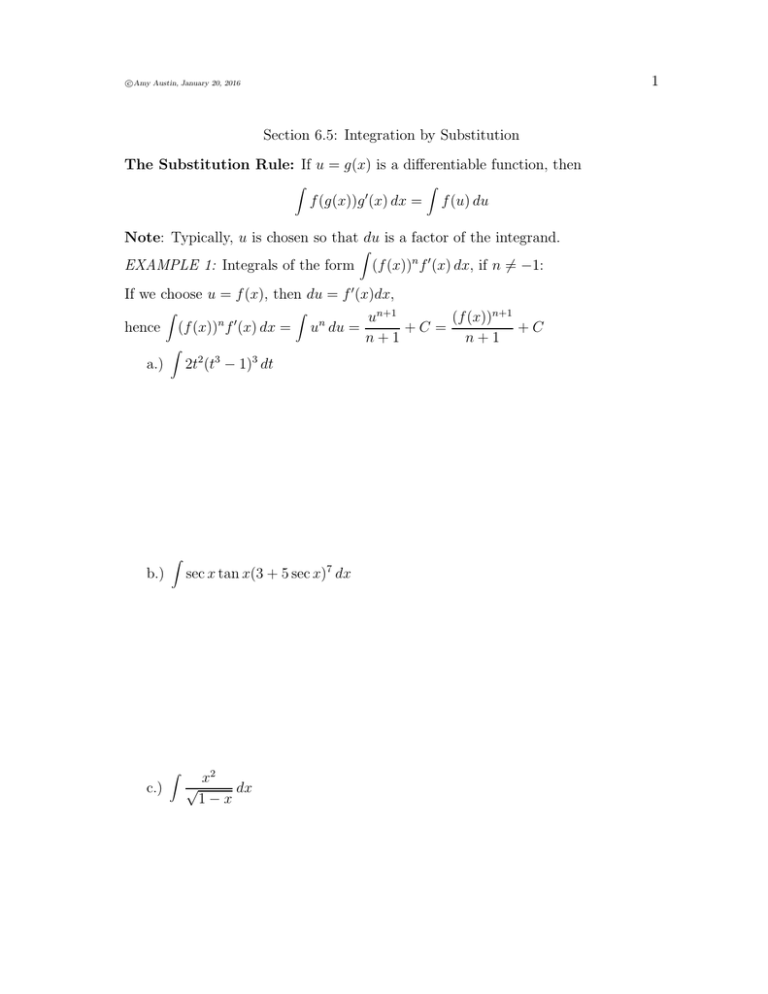
1 c Amy Austin, January 20, 2016 Section 6.5: Integration by Substitution The Substitution Rule: If u = g(x) is a differentiable function, then Z ′ f (g(x))g (x) dx = Z f (u) du Note: Typically, u is chosen so that du is a factor of the integrand. EXAMPLE 1: Integrals of the form Z (f (x))n f ′ (x) dx, if n 6= −1: If we choose u = f (x), then du = f ′ (x)dx, hence Z n ′ (f (x)) f (x) dx = a.) Z b.) Z c.) Z Z un du = 2t2 (t3 − 1)3 dt sec x tan x(3 + 5 sec x)7 dx √ x2 dx 1−x un+1 (f (x))n+1 +C = +C n+1 n+1 2 c Amy Austin, January 20, 2016 EXAMPLE 2: Integrals of the form du = f ′ (x)dx, hence a.) Z b.) Z Z Z ef (x) f ′ (x) dx = Z ef (x) f ′ (x) dx. If we choose u = f (x), then eu du = eu + C = ef (x) + C e1/x dx x2 2 2 xex dx −1 EXAMPLE 3: Integrals of the form du = f ′ (x)dx, hence a.) Z 1 2 Z x+1 dx x2 + 2x f ′ (x) dx = f (x) Z Z f ′ (x) dx. If we choose u = f (x), then f (x) du = ln |u| + C = ln |f (x)| + C u c Amy Austin, January 20, 2016 b.) Z c.) Z x+1 dx x2 + 1 d.) Z tan(x) dx e4 e3 1 dx x ln x 3 4 c Amy Austin, January 20, 2016 EXAMPLE 4: Integrals of the form Z sec(f (x)) tan(f (x))f ′ (x) dx, Z Z ′ cos(f (x))f (x) dx, csc2 (f (x))f ′ (x) dx, Z Z ′ sin(f (x))f (x) dx, Z sec2 (f (x))f ′ (x) dx, csc(f (x)) cot(f (x))f ′ (x) dx Typically, we choose u = f (x), the angle, in these cases. √ Z sec2 x √ a.) dx x b.) Z (sin(3α) − sin(3x)) dx EXAMPLE 5 : How do you choose u? For the following intergals, choose u and rewrite the integral in terms of u and du. Z arctan x dx a.) 1 + x2 b.) Z √ c.) Z x dx 1 + x4 sin x dx 1 − cos2 x 5 c Amy Austin, January 20, 2016 A few more integrals we added in class: EXAMPLE 6 : Integrals of the form NOTE: ALL *LINEAR* u′ s EXAMPLE 7 : Z x3 (1 + x2 )9 dx Z ekx dx, Z sin(kx) dx, Z cos(kx) dx
